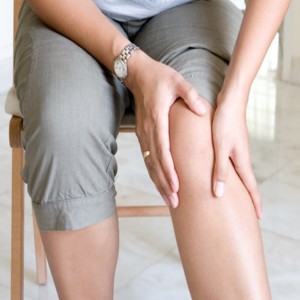Getting a Leg Up on Knee Pain
Is knee pain limiting your lifestyle? If so, you're not alone! The prevalence of knee pain and knee replacement surgeries has surged in the  past 20 years in the US. One common cause of knee pain is osteoarthritis (OA), which is more common in women than in men after the age of 45. OA is a degenerative condition that affects the cartilage that acts as padding between the bones of the joints. Over time, normal wear and tear causes the cartilage to break down, reducing the cushioning in the joints and causing pain, inflammation and swelling.
Why are women more vulnerable than men? The width of the female pelvis frequently causes a sharp angle between the bones of the upper and lower legs, where the thigh meets the knee (the "Q angle"). This causes misalignment in the tracking of the knee cap, resulting in uneven wear on the cartilage.
past 20 years in the US. One common cause of knee pain is osteoarthritis (OA), which is more common in women than in men after the age of 45. OA is a degenerative condition that affects the cartilage that acts as padding between the bones of the joints. Over time, normal wear and tear causes the cartilage to break down, reducing the cushioning in the joints and causing pain, inflammation and swelling.
Why are women more vulnerable than men? The width of the female pelvis frequently causes a sharp angle between the bones of the upper and lower legs, where the thigh meets the knee (the "Q angle"). This causes misalignment in the tracking of the knee cap, resulting in uneven wear on the cartilage.
What to do?Before you resign yourself to having "bad knees" take these preventive measures:
- Nix the high heels. Wear supportive flats or low heels. Heels higher than two inches change your center of gravity, putting stress on the front of your knees.
- Maintain a healthy weight. Carrying excess weight overloads the joints. Every extra pound you carry puts three pounds of pressure on your knee joints when you walk and 10pounds when you go down stairs or run.
- Exercise to burn calories and build muscle. Without regular exercise your muscles weaken, leaving your joints without proper support. Focus on low-impact activities that build endurance, strength and flexibility. Exercise will help relieve joint pain and stiffness,provide nourishment to the cartilage and keep you mobile.
- Use proper bio-mechanics. To bend down, squat, keeping your knees over your ankles. Kneeling puts pressure directly on kneecaps, causing irritation.
Of course this information should not take the place of guidance from your own physician or other medical professional. Always consult with your doctor before beginning an exercise program or becoming much more physically active.
